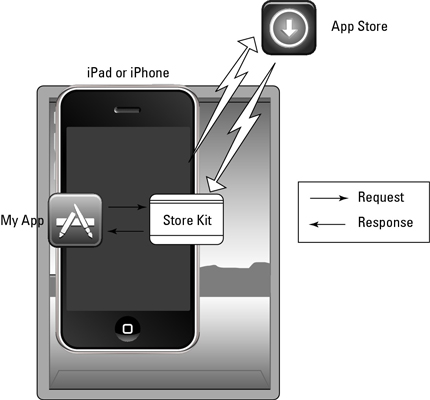Some apps are more complicated than others, some are designed really simply and other has lots of coding, the complexity of an app depends on the purpose of the app and the features that the app uses.
One feature that my application would use would be an in app purchase feature, this would allow the user to purchase extra content from the app itself with out having to use an external source.
In App Purchase collects only payment. It doesn't download the e-book, add the game level, or hand over the virtual property. You need to provide the additional functionality, including unlocking built-in features or downloading content from your servers.
You use iTunes Connect to set up your products the same way you set up new apps. In App Purchase supports four types of products:
- Content: You can offer game levels, virtual property, and characters; digital books and magazines; photos and artwork — in short, any content that can be delivered within your app.
- Functionality: You can unlock or expand features you've already delivered in your app, such as a game that offers multiple smaller games for purchase.
- Services: You can charge users for a one-time service, such as voice transcription — each time the service is used, In App Purchase processes it as a separate purchase.
- Subscriptions: You can provide access to content or services on a subscription basis, such as a finance magazine or an online game portal. You're responsible for tracking subscription expirations and renewal billing — the App Store doesn't send out renewal notices for you.
Another function that will be used in my app will be a random generated facts that will feature in all of the non video based pages. In order to achieve this a database will need to be created and code for a random number generator will need to be added. An example of the code (made in C language) that this would use is shown below,
#include <stdlib.h>
#include <stdio.h>
#include <time.h>
/* prints a random number in the range 0 to 99 */
int main(void)
{
randomize();
printf("Random number in the 0-99 range: %d\n", random (100));
return 0;
}
This code will generate a random number between 0 and 99. this is an example of how the code will work for my own application.




